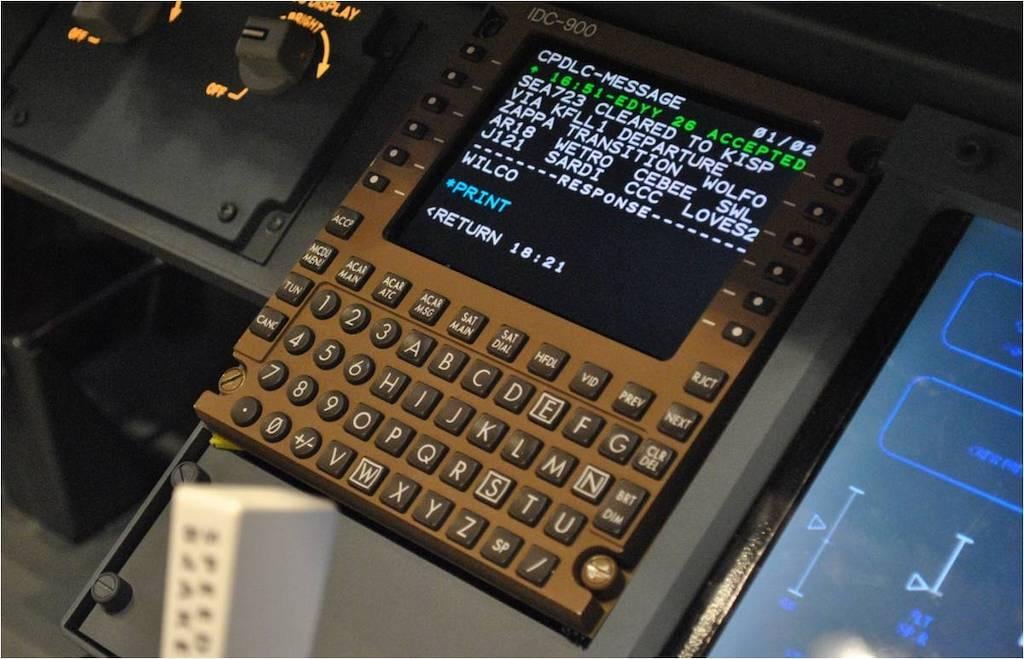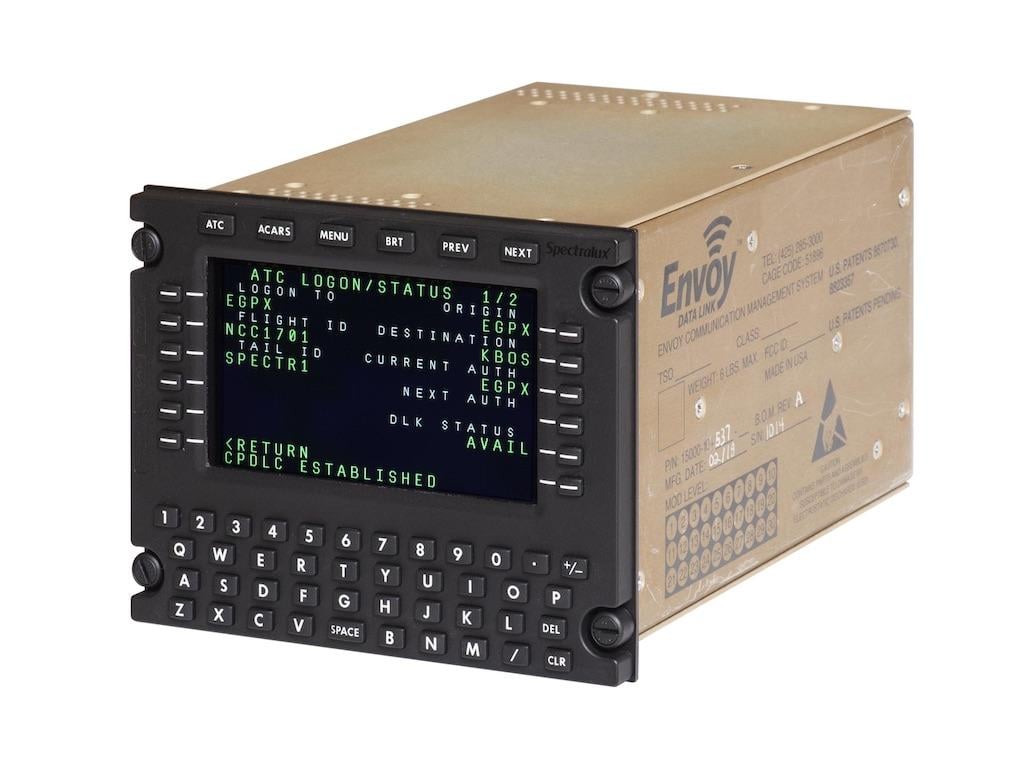
Flight crews traveling over oceans and land will increasingly communicate with air traffic control (ATC) by digital data link. Data link services are available in most of the world’s oceanic routes as well as in much of the terrestrial airspaces.
In a recent installment of its Straight Talk series of booklets, MRO Duncan Aviation provides helpful information on the different data link systems that have been deployed, their functionality and the on-board equipment that is needed to access them, at https://www.duncanaviation.aero/resources/straight-talk/
The FAA also provides a description of data link communications services in Advisory Circular 90-117.
Data Link Mandates And Programs
As of Jan. 30, 2020, the International Civil Aviation Organization (ICAO) mandated that all aircraft operating between FL290 and FL410 (29,000 ft. to 41,000 ft.) be equipped to communicate with ATC by Future Air Navigation System 1/A (FANS 1/A) controller-pilot data link communications (CPDLC) and report their position by automatic dependent surveillance-contract (ADS-C) both routed by satellite.
In the spring of 2020, an ICAO regional planning entity, the North Atlantic Systems Planning Group, agreed to temporarily suspend the requirement due to the decline in air traffic caused by the COVID-19 pandemic. The group voted to reinstate the requirement in early 2021.
Europe’s Data Link Services (DLS) mandate requiring that aircraft flying above 28,500 ft. be CPDLC-capable became effective in February 2020. The European regulation specifies the Aeronautical Telecommunications Network B1 (ATN-B1) message protocol, which differs from the FANS 1/A message set used by the U.S. Data Comm program. Both are transmitted over land by VHF Data Link Mode 2 (VDL2) radio.
FANS-equipped aircraft are exempt from the DLS mandate, as are aircraft with 19 seats or less and an MTOW of 100,000 lbs. or less with a first airworthiness certificate issued before Feb. 5, 2020, which covers most general aviation aircraft.
The FAA’s domestic Data Comm program, now available at 62 airport towers and planned for deployment to 20 air route traffic control centers that manage enroute traffic, is not a requirement for operators. Data Comm uses FANS 1/A protocol CPDLC messages, sent over VDL2 radios. For more information, see BCA Checklist: En Route Data Comm Use, at https://aviationweek.com/business-aviation/checklist-en-route-data-comm…
European and FAA plans call for eventually transitioning to ATN Baseline 2 communications protocol over VDL2 to harmonize U.S. and European requirements.
Future Air Navigation System (FANS) 1/A+

Developed by the ICAO, Boeing, Airbus, Honeywell and others, FANS provides a direct data link between the pilot and controller over the Aircraft Communication Addressing and Reporting System (ACARS). FANS 1 was developed by Boeing in the early 1990s and later adopted by Airbus as FANS A. FANS 1/A has two parts: CPDLC and ADS-C. The + in FANS-1/A+ refers to the fact that the system has the latency timer function that will detect messages that may no longer apply.
Controller Pilot Data Link Communications
CPDLC allows two-way, digital communication between a controller and a pilot when an aircraft is out of range of traditional analog VHF voice-radio communications. As with terrestrial-based messaging between cell phones, CPDLC communicates between ATC and the aircraft flight crews via text messages. The CPDLC application has three primary functions:
- Facilitates the exchange of messages between the pilot and the ATC who is currently in control of the aircraft
- Clarifies dialogue between ATC and the aircraft crew who speak different languages (negates difficulty understanding accents because all communication is text-based)
- Allows the crew to review ATC instructions
Automatic Dependent Surveillance-Contract
ADS-C is both a standard and an application that automatically sends reports from an aircraft to an ATC unit and requires no action from the pilot. The report includes data, such as the aircraft identification and address, air vector, ground vector, projected profile, meteorological data, min/max ETA, and EPP (Extended Projected Profile) data.
When operating in normal mode, the system generates three types of reports:
- Periodic—ATC can set or alter the update rate as needed (a higher update rate is usually required in high-traffic areas)
- Event—A change in vertical rate, lateral deviation, or altitude automatically triggers a report
- Demand—ATC can request an update as needed, and this does not affect an existing contact preset rate
Aeronautical Telecommunications Network-Baseline 1
ATN-B1 is a datalink service that consists of the following:
- Context management (CM) application
- CPDLC for ATC communications
Although ATN-B1 is similar to the FANS/CPDLC system used in North Atlantic airspace, ATN-B1 uses VDL2 radio instead of a satellite communications. It is meant to be used in areas where ground surveillance already exists because there is no surveillance component to this technology.
ATN-B2
ATN-B2 will enable extended capabilities not possible with ATN B1 or FANS 1/A+. ATN-B2 CPDLC will include context management, CPDLC and ADS-C over the Internet Protocol suite. B2 provides additional services for both CPDLC and ADS-C.
The ATN-B2 program is being rolled out in two segments:
Segment 1, Phase 1 allows for tower services DCL (Departure Clearances) to be obtained via CPDLC at all airports that currently support FANS 1/A+ technology.
The Segment 1, Phase 2 rollout allows for initial enroute CPDLC services.
- Transfer of communications
- Initial check in
- Altimeter settings
- Altitudes
- Speed
- Crossing restrictions
- Airborne reroutes
- Controller initiated reroutes
- Direct to fix
Segment 2 will allow for more advanced or full enroute services and technologies.
- Controller initiated routes
- Crossing restrictions
- Direct to fix
- Advisory messages
- Holding instructions
Currently, FANS and ATN are options for business aircraft equipped with Garmin G1000/3000/5000, Honeywell Primus Epic and Collins Pro Line 21 and Fusion avionics systems, says Duncan Aviation. Some services bulletins, such as for the Dassault Falcon EASy flight deck, are available to Duncan Aviation and other service centers. Others, such as for large-cabin Gulfstream jets, are not.
The Duncan Aviation Straight Talk booklet focuses on FANS equipment for retrofit. Aircraft that lack a FANS system may spend more time flying less efficient routes because ATC has to create an oversized pocket of airspace to accommodate them, the MRO advises. Also, aircraft that are equipped with ATN may see operational advantages over non-compliant aircraft at airports that are equipped with data link communications) capability.
“Each equipment provider has a data link unit that has FANS or FANS/ATN capability,” says Duncan Aviation. “The datalink will interface with the flight management system to provide a connection between the crew in the cockpit and ATC. The crew will log on to the applicable network to establish the connection between the aircraft and ATC.“



